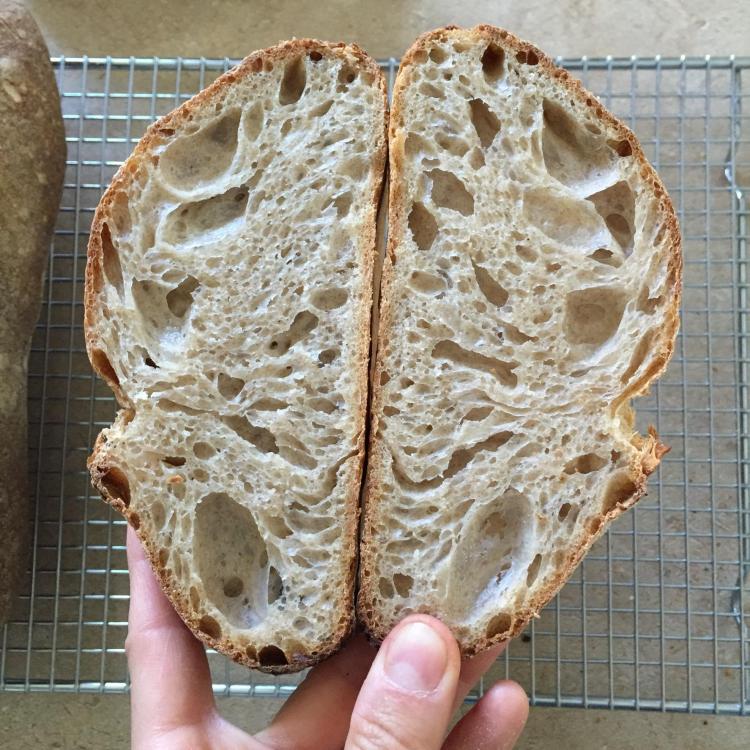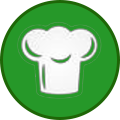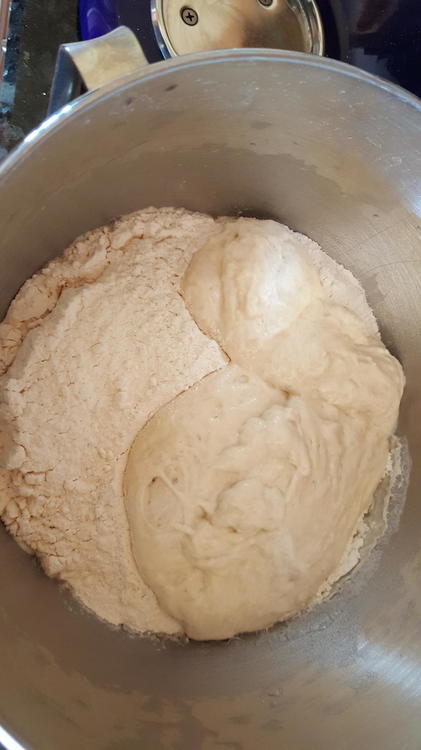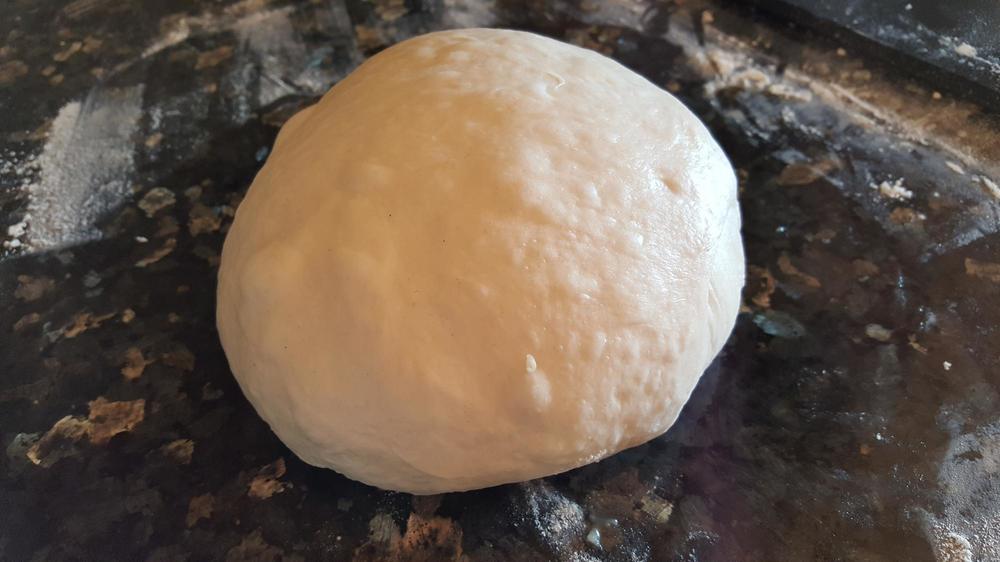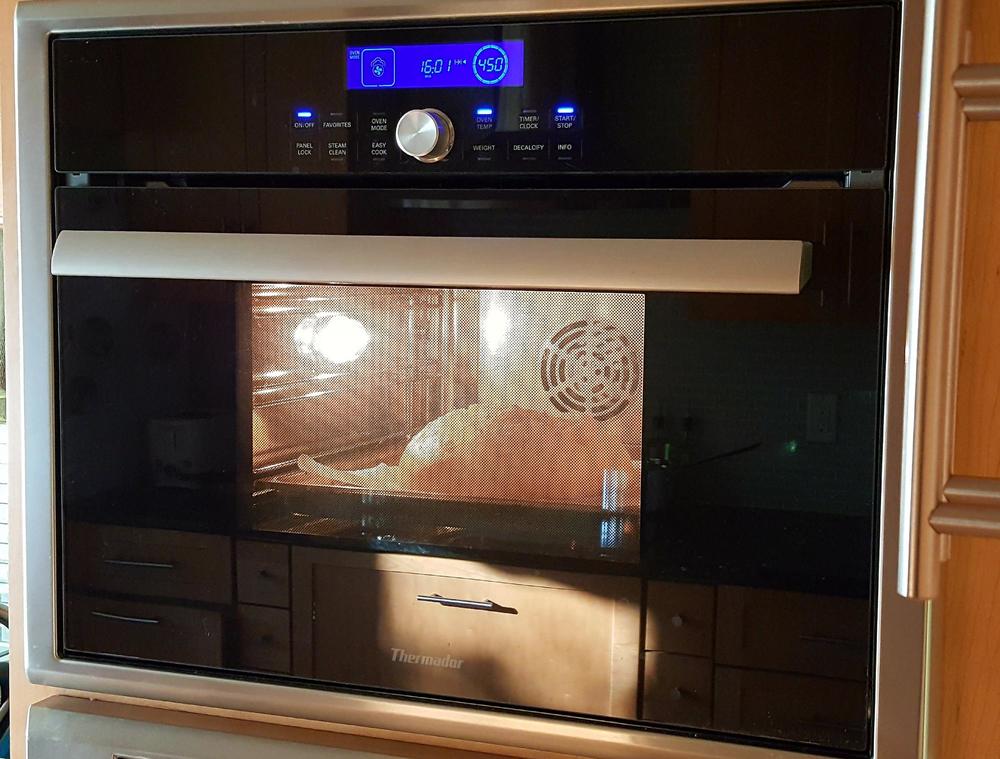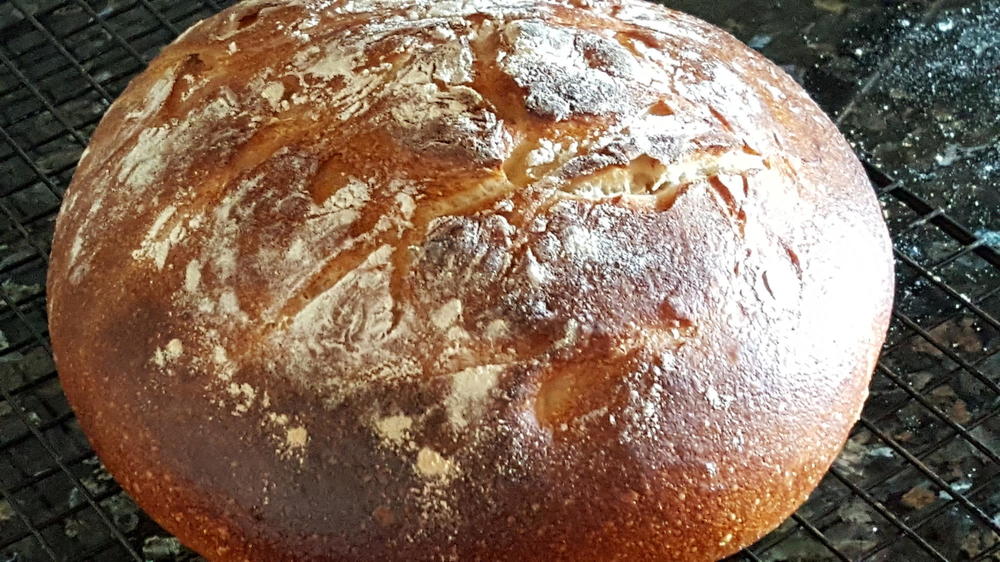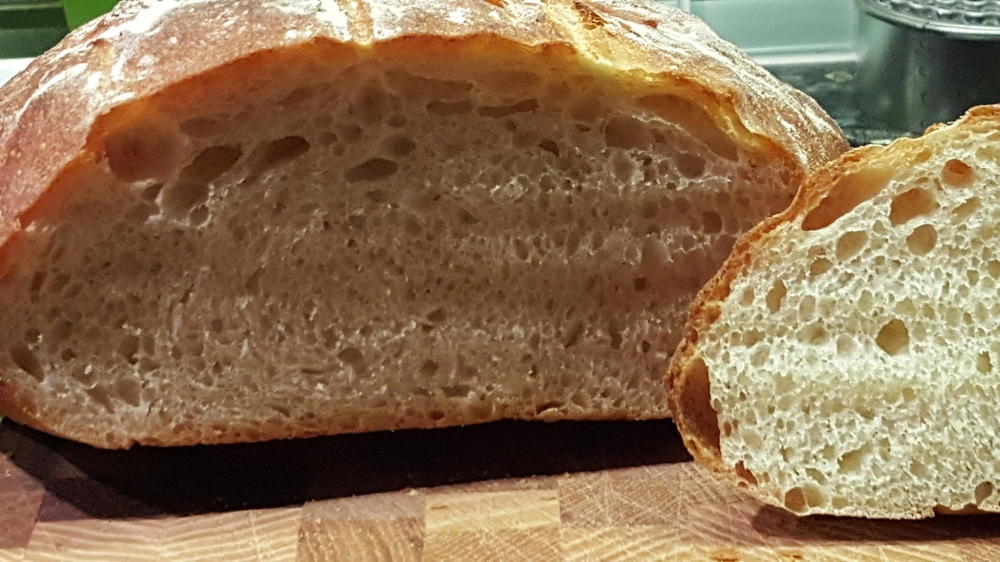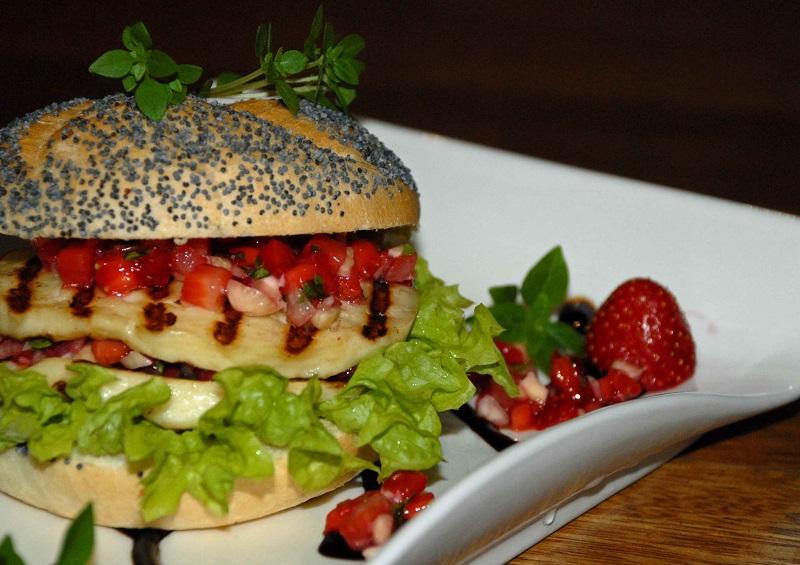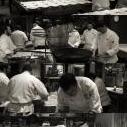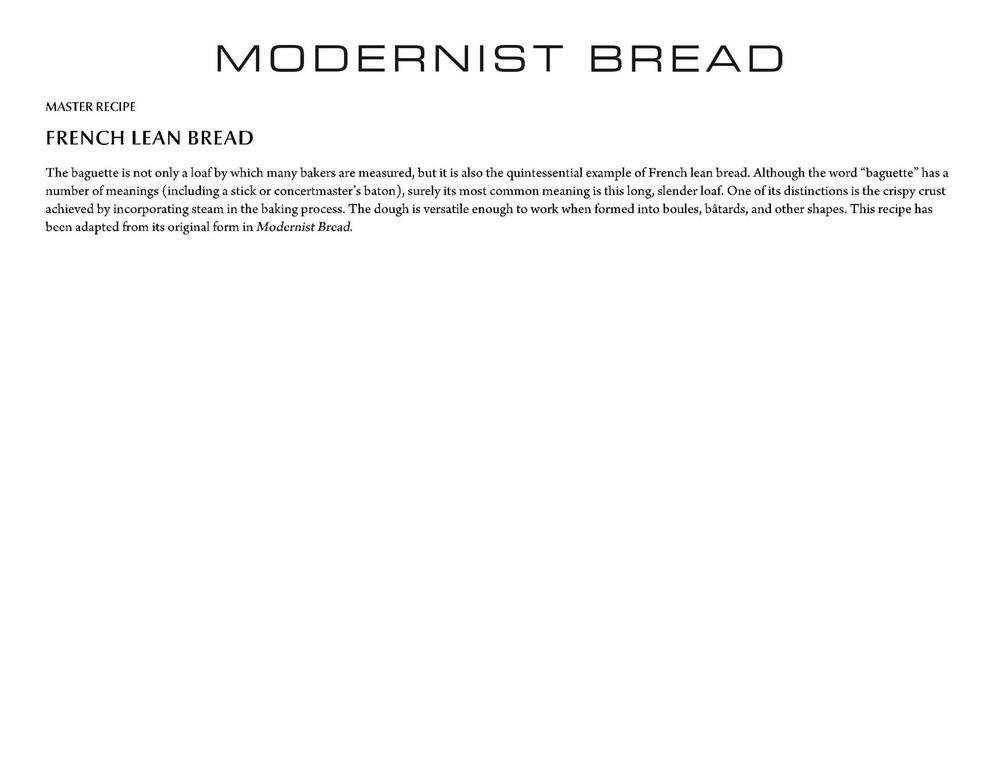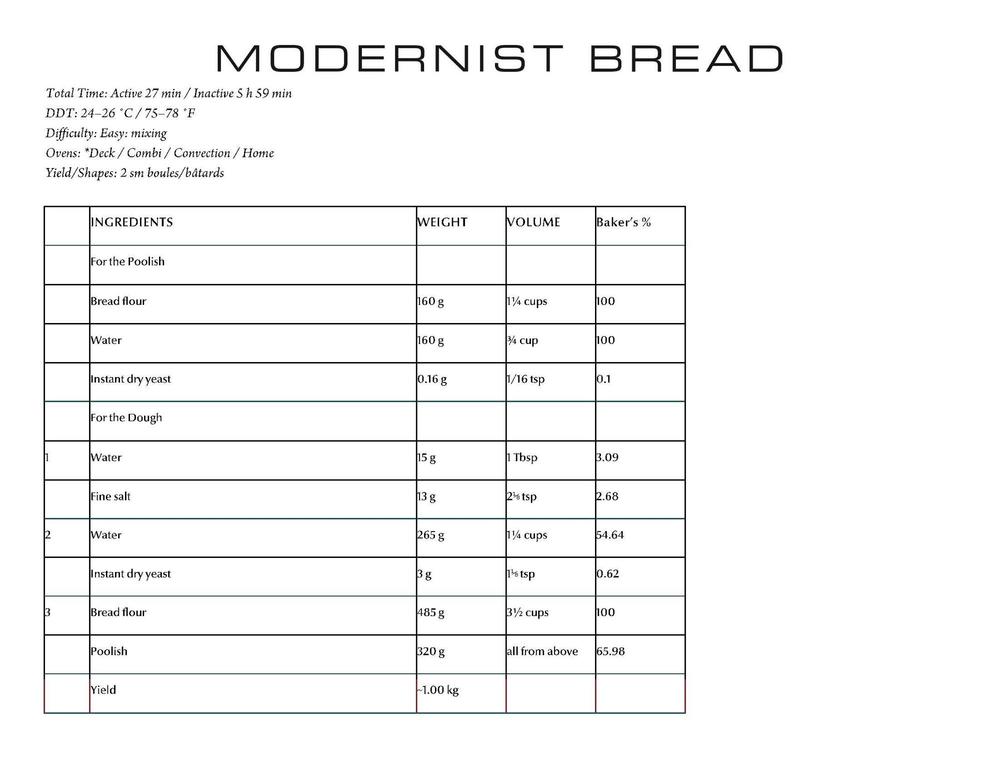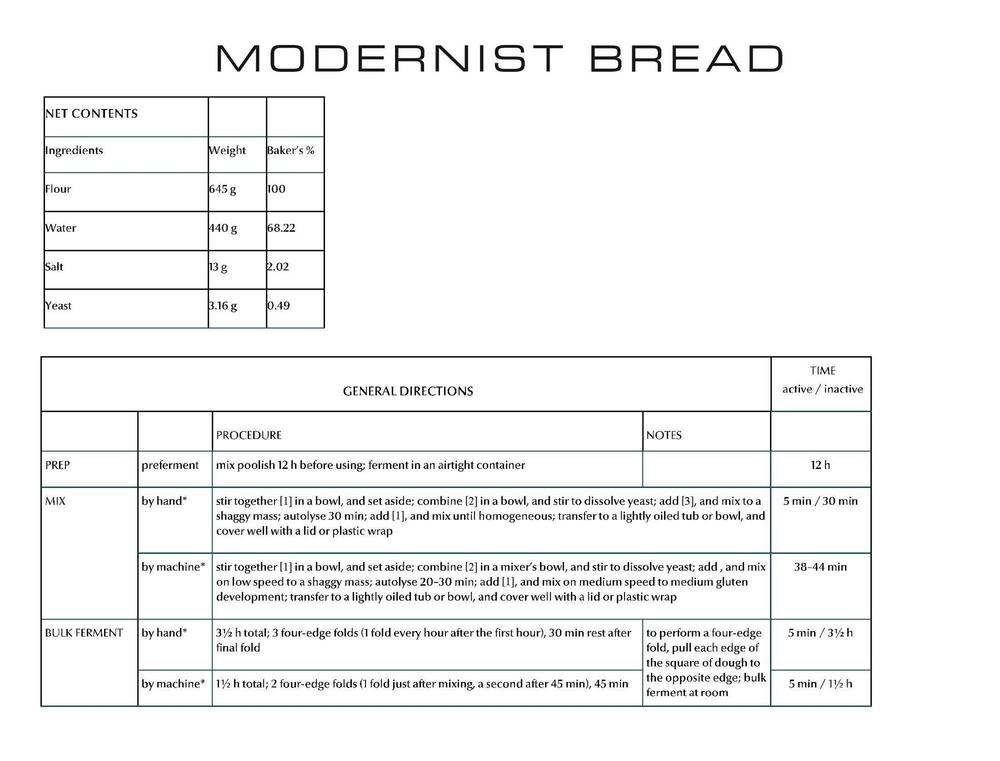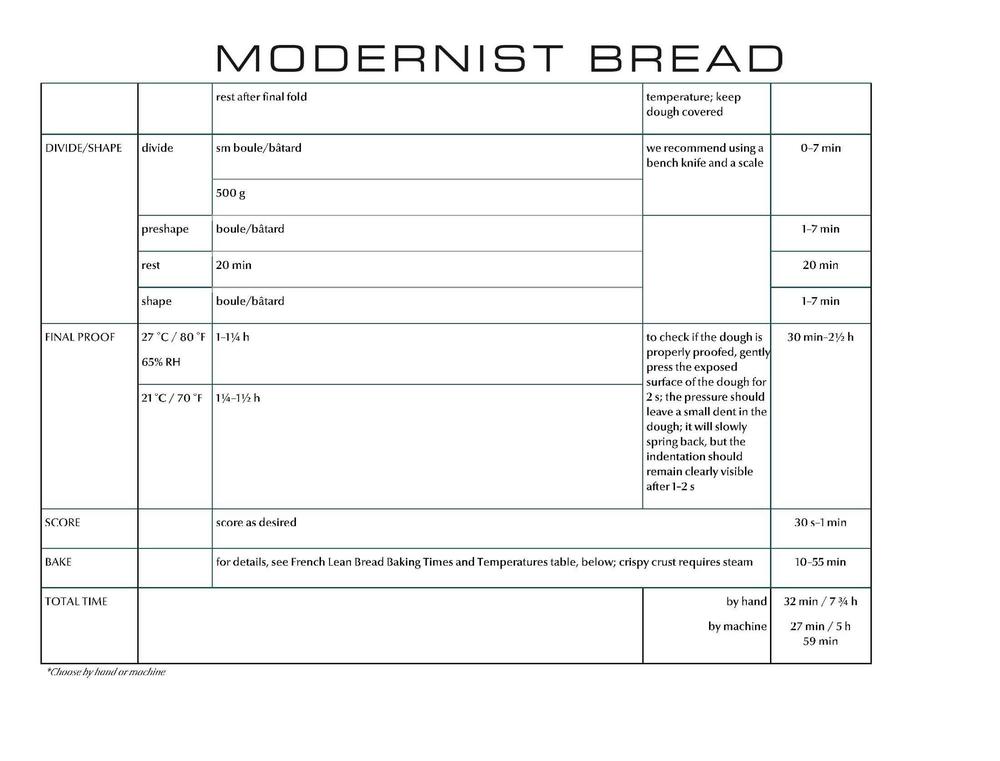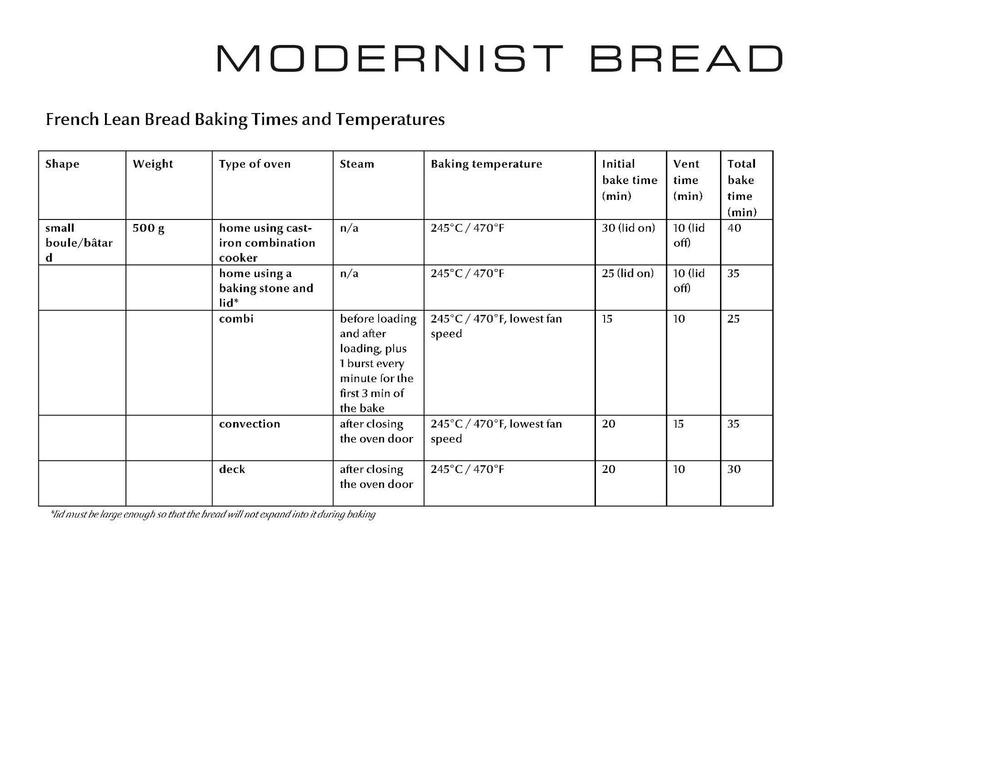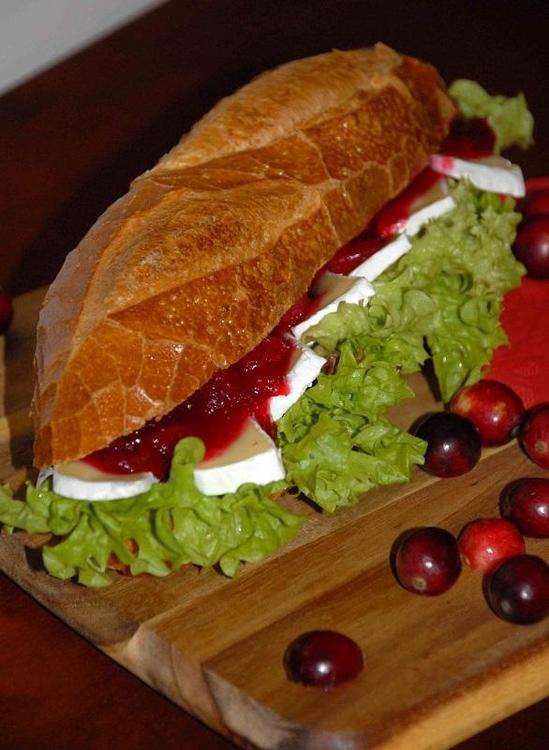Search the Community
Showing results for tags 'Bread'.
-
Host's note: this is part of a large topic that has been split into smaller segments to reduce the load on our servers. The previous segment may be found here: The Bread Topic (2015-2016). I've been trying to settle on a formula for a nice, basic, no frills sourdough which my friends (with zero interest in whole grains) can enjoy, and I think I've found my winner in a country white (10% w/g spelt) with 80% hydration. Mild, mild sourness despite the 12 hour cold proof. I want to try holding back some of the water to see if I can achieve better loft, but otherwise, I am happy with the formula.
-
I can make, by my own admission , perfect sourdough, fantastic baguettes, delicious pizza (even approved by native neapolitans) but I cannot, even after multiple tries, make an acceptable focaccia. Mine always ends up overly dry or too oily. I've tried, as advised by some to use a pizza dough but this ends up too thin and crispy. Others end up as simply like a thin slab of bread. What I am looking for is a soft, delicate but slightly chewy bite with lots of open holes. The focaccia should be lightly but perceptibly oily, nicely salty and with a hints of rosemary or oregano in the topping. The focaccia should also have nice rise and be thick not thin like an unadorned pizza base. So come on egulleteers help me out and let's see those attempts for the perfect focaccia recipe!
-
Either the texture is weird; or it's too sweet; or it's too oily; or it's too heavy; or... Banana bread would be my preferred method for dealing with all of the inevitably over-ripe bananas that are hanging out in my freezer...sometimes you just get tired of banana smoothies. However, I still have an overabudance of these bananas because I can't find a recipe that I like. Does anyone have suggestions?
-
I have used this recipe many, many times to make pita bread. Usually one or two never puff up but enough do that I just pass it off as one of those things. This morning I made a batch of dough and not a single pita puffed up. I tossed the lot in the trash and started again. Believe it or not, NONE of the second batch puffed either. What is going wrong? I used the same set up as always, followed the recipe as always, used the same ingredients, etc. My yeast is fresh and the dough itself rises properly. I simply have no clues as to why they are not puffing in the oven and am reluctant to try a third batch until I find out.
-
So I'm no professional chef. But foreign cuisines and inventive ways of cooking and "baking" would sometimes be a past time or a "study session". Much like someone who's experiment to see how high a bicycle could fly if ridden on top of mountain pile of gravel. - Study Session. Yes did that. Back to the topic. And the professional chefs can please tell me what went wrong. I wanted to bake bread on top of a stove. So I looked up the recipe I don't remember where (probably thought a simple pizza dough would suffice), and got the dough for the bread all into shape. I then took a stainless steel metal jug, and stuffed the dough right to the bottom with a lot of space on the top. I then took the jug, turned the stove on, and topped the jug upside down over the low flames. The space was there inside the jug, between the dough and and the low flame. And I let it sit for long time. And then I took it off. And it wasn't bread. So why may I ask, did that not become bread? But a sticky uncooked dough with light touch of burnt dough nearest to the fire.
-
Has anyone tried this? CLICK HERE for the story " ... I came across a blog post from Zingerman's Bakehouse that discloses they've been including the whole banana—peel and all!—in their banana bread for years."
-
San Diego has a small number of artisanal bread bakeries. Bread & Cie has been my favorite for years, and their breads are now available in many supermarkets, which is very convenient. But it's nice to have some variety. So I was excited to spot a new bakery this weekend in Linda Vista. It's called Pacific Time and it is also a sandwich place with a small market with things like small-batch preserves, local beers, a cheese counter, charcuterie platters, and wine. It's located within a recently renovated strip mall that also hosts Brew Mart & Ballast Point. The bread I bought was a French-type rustic boule, dark, a bit reminiscent of Poilane but less dense. The crust could have been a little more crispy (it felt like the bread had sat around a little bit and softened in the paper bag), but the flavor was wonderful. Here is the bread:
-
HOST'S NOTE: This post and those that follow were split off from the pre-release discussion of Modernist Bread. ***** Figured I don't need to dump all this into the contest thread - so I'll post here. My journey to making my first MC loaf. Her's the poolish after >12 hours: Not pictured - water with yeast in it below the bread flour and poolish That went into the mixer and not long later I had a shaggy mass: That rested for a while - then mixed until medium gluten formation - a window pane that was both opaque and translucent (no picture for that slightly messy part) Folded and rested, folded and rested, I think this is 1/2 the mass now ready to rest one final time. Proofed it in the oven - I have a picture of that but it's just foggy window oven Then it went into the oven, here it is at max temp - 450 with steam turned on. Completed loaf: \ And the crumb - this is awesome bread:
-
I live in India and we dont generally get bread flour out here. We have basically AP flour, about 11% protein content. I've tried out recipes i've found on various websites and books, and i've found that lack of gluten tends to become a problem. I have gluten powder available and was wondering if there is a general proportion of gluten powder to add to AP flour to use for breads. It'd be great if someone could help me out, especially if the proportion is in terms of weight rather than volume. Thanks
-
Ive been reading numerous articles, blogs, etc where people mention that they use a Romertopf for baking breads, including the no knead bread. I am still a bit confused because there are mixed commentary on whether to soak or not to soak prior to popping the baker into a cold oven. Can anyone who owns a Romertopf and uses it for no knead share your method for no knead and whether you soak it or just preheat? I would like to make an enlongated version of this bread and have made an ok circular bread with my chamba pot. The Romertopf that I own is unglazed and its the medium size that can hold a whole chicken. (111) i think.
-
Hello all, In attempt to make it easier to work high hydration dough, I had a thought about using gelatin and water in order to make jello cubes, and incorporate them into the kneaded dough. The idea is that unlike extra water, the jello will not have much adverse effect on the dough texture, stickiness and ease of handling. However, when baked, the gelatin will dissolve and allow the water to boil into steam and effectively increase the hydration, resulting in more aeration, raise and moistness. I tried it once, reducing apx. 7% water from the dough and folding in 7% gel after kneading. However, I mistakenly made too weak of a gel, and it just melted into the dough. Shaping wasn't easier then usual (sticky as always ). The bread did bake as usual, with no ill effects. I think I should try it again, replacing 15% of the water with much stronger jello. I'd like too hear your opinion, am I wasting my time or does it make sense? I thought it might also theoretically work in laminated dough, possibly replacing some of the butter?
-
Ever seen this cooking technique ? A reference with pictures in italian language. Could'nt find any in english. http://cheprofumino.blogspot.it/2009/02/la-nostra-pizzasenza-forno.html
-
The team behind Modernist Cuisine: The Art and Science of Cooking is hard at work on their next multivolume set, which is completely dedicated to bread. For the new book, we’d like to honor some of the greatest regional and hyper-regional breads from around the globe and we would love to hear from the eGullet community to expand our search. In your opinion, what are the breads that your city or region is known for? What are the loaves that you can’t find anywhere else? Example: Stretch bread, Syracuse, NY You can read more about the new book here, and here for more information about who we are and what we do.
-
The team behind Modernist Cuisine: The Art and Science of Cooking is hard at work on their next multivolume set, which is completely dedicated to bread. We’d like to honor some of the greatest bakers and bakeries from around the globe in our new book, and we would love to hear from the eGullet community to expand our search. What are your favorite bakeries for bread? Does the bakery have an iconic bread that they’re known for? Do they use any uncommon ingredients or special techniques to make their bread? Please provide the address of the bakery, name of head baker, and a photo of the bread, if feasible. For example: Country Bread from Tartine in San Francisco, CA – Chad Robertson, baker You can read more about the new book here, and here for more information about who we are and what we do.
-
The folks behind Modernist Cuisine have announced a projected publication date of March 2017 for their new five-volume set on bread (previously discussed here). Start saving up now!
-
I want to leave my sourdough (itself, not baked loaves of sourdough bread) for a while (going abroad) but I do not want it to die, can I leave it in the freezer? do you have other ideas?
- 7 replies
-
- Bread
- Troubleshooting
-
(and 1 more)
Tagged with:
-
Hello there, I need a book that will teach me the secret science behind baking and free me from recipes. I am developing a blog that will focus a lot on baking. I will be developing my own recipes so I need guidance on the science behind baking. I have read "Ratio" by Michael Ruhmlman and even though it is great I find it somewhat incomplete. In the section of cakes, for instance, he addresses the ratio (1:1:1), the methods (creaming and foaming), and he gives wonderful variations for the basic recipe. He doesn't, however, address the issue of adding cocoa powder to the batter. Cocoa powder, in my view, is not merely a flavoring, it has the potential to interfere with the balance of a cake. If I add cocoa powder, do I decrease the amount of flour? If I decrease the flour amount, should I also decrease the sugar amount? "Ratio" also left some questions unanswered in the cookie section. Ruhlman gives the basic 1,2,3 ratio, but he doesn't really address that some cookies, for instance, have eggs in them. He doesn't address the role each ingredient has. What makes a cookie crumbly or crunchy? What makes it gooey? What makes it soft and cakey? I know that flour and eggs give structure to baked goods, and sugar and fat give it tenderness. But I need a book that addresses in depth the role of each ingredient, along with its percentage.Is there such a book in the market? I understand that no single book might address all the questions I have, but what books would be a good starting point for me?
-
Today I would like to share with you a recipe for a slightly different sandwich. Instead of traditional vegetables, I recommend strawberry salsa, and rather than a slice of ham – a golden grilled slice of Halloumi cheese. Only one thing is missing – a fresh and fragrant bread roll. Halloumi is a Cypriot cheese made with sheep's milk or a mixture of sheep's, goat's and cow's milk. It is semihard and so flexible that it is excellent for frying and barbecuing, and it is great fresh too. Ingredients (for two people) 2 fresh rolls of your choice 2 big lettuce leaves 4 slices of Halloumi cheese 2 teaspoons of butter salsa: 8 strawberries half a chili pepper 2 tablespoons of minced peppermint leaves ¼ a red onion 2 tablespoons of chopped almond without the skin 1 teaspoon of honey 2 tablespoons of lemon juice 2 tablespoons of balsamic sauce Start by preparing the salsa. Wash the strawberries, remove the shanks and cube them. Dice the onion and chili pepper. Mix the strawberries with the onion, chili pepper, peppermint and almonds. Spice it up with honey and lemon juice. Leave in the fridge for half an hour. Grill the slices of Halloumi cheese until they are golden. Cut the fresh rolls in half and spread them with butter. Put a lettuce leaf on each half of roll, then a slice of the Halloumi cheese, one tablespoon of salsa, another slice of cheese and two tablespoons of salsa. Spice it up with balsamic sauce. Cover with the other half of the roll. Prepare the second sandwich in the same way. Serve at once while the cheese is still hot. Enjoy your meal!
-
How to Make Rye Sourdough Bread I don't know what it is about bread, but it is my favorite thing to make and eat. A freshly baked loaf of bread solves a world of problems. I was lucky enough to get to be one of the main bakers when I worked at the Herbfarm. We baked Epi, Baguettes, Rolls, Pretzels and so much more. Rye Sourdough Wood Oven Baked Bread My fondest memory when I worked there was our field trip to the Bread Lab(wait something this cool came out of WSU, of course!) here in Washington. They grow thousands of varieties of wheat and have some pretty cool equipment to test gluten levels, protein, genetics and so on. I nerded out so hard. What came out of that trip was this bread. Now I can't recall the exact flour we got from them, but using a basic bread and rye will do the trick. We used to get a special flour for our 100 mile menu. This was where we were limited to only serving food from 100 miles away. So finding a wheat farm that made actual hulled wheat in 100 miles was a miracle. The year before...the thing we made, was closer to hard tack. Now if you don't have a starter, I recommend starting one! It is a great investment! Rye Sourdough 1000 g flour (60% Bread Flour, 40% Rye) 25 g salt 75 g of honey/molasses 200 g of Rye starter 650 g of water, cold Equipment Baker Scale (or other gram scale) Bench Cutter Bread Razor (you could also use one of those straight razors) Start by taking the cold water, yeast and Honey and mix together and let sit for 10-15 minutes I know, some of you just freaked out, cold water? Won't that kill the yeast. Nope, the yeast just needs to re hydrate. I prefer using cold water to slow the yeast down. That way the lactobacillus in the starter has a good amount of time to start making lactic acid, and really get to flavor town! While that is sitting, I mix the flour and the salt together(How many times I have forgotten to salt the bread). Now mix the two products with a kneading hook for 3-5 minutes, only until thoroughly mixed but not yet at the window pane stage of kneading. Instead, place into a bowl and set a timer for one hour. Then when that hour is up, push the dough down and fold all the corners in Repeat this step 2-3 more times, pending on the outside temperature. If you happen to have those cool bowls to shape round loafs! Awesome, use them. I would break the boules into 3 balls of about 333 grams If not then just put the dough in the fridge and do the steps below the next day. Once you have bouled the bread, can put it into the fridge and let it sit over night Again, this lets the bacteria, really get to work(misconception is the yeast adds the sour flavor, nope, think yogurt!) Now on the next day, heat up whatever form of oven you plan to use. We used a brick oven but if you just have a normal oven, that is fine. Crank it to 450 degrees Fahrenheit. If you have not bouled your bread yet, go back and watch the video and break the dough down into three balls of abut 333 grams. Then place the balls on a lightly greased sheet pan. Let sit for about 45 minutes to 1 hour. If you have used the fancy bowls then turn the the bread out on a lightly greased sheet pan, without the bowl and let temper for 15-30 minutes. If your oven is steam injected, build up a good blast of steam. If not, throw in a few ice cubes and close the door or put a bath of hot water inside. The steam is what creates the sexy crust! Let it build up for a few minutes! Right before you put the bread into the oven use a bread razor to slice the top of the bread. Place the dough balls into the oven and douse with another blast of steam or ice and close the oven. Let them bake for 13 minutes at 450 degrees. Then turn the loaves and bake for another 10 minutes. Remove when the crust is as dark as you want and the internal temperature exceeds 190 degrees Fahrenheit. Now pull out and make sure to let cool off of the sheet pan with room to breath underneath. You don't want your crust steaming! Now here is the hardest part, wait at least 20 minutes before getting into the bread. Also, cutting into bread to early really seems to come out poorly. I would rip the bread until 1-2 hours has passed. Now serve it with your favorite butter, goat butter or whipped duck fat!
-
Hi, I have just discovered and registered on this site. My main cooking and baking concern is that I have been diagnosed with Celiac Disease and haven't been able to eat gluten. BUT I have discovered an exception. When I have visited Continental Europe such as Spain and Russia, I have been able to eat their bread and have had no negative repercussions. Then when I try eating bread in Great Britain and North America I have become sick. My research on the Web has not provided any explanations although I believe the EU has banned GMO grains. I was recently gifted panetonne from a Toronto restaurant called Sud Forno that uses Italian flour and I was able to safely eat it. Another bakery called Forno Cultura advertises that it uses European flour. So I am going to approach them to see if I can buy their flour in bulk. I will let you know how it goes.
-
Does anyone know if using a high-protein flour, rather than AP flour, in a quickbread formula could create a gummy texture as a result of the protein slightly developing as it absorbs water? I was attempting to reduce water activity in the formula by using flour with 14% protein rather than 8-10% protein. Am I out in left field on this one?
- 2 replies
-
- Bread
- Troubleshooting
-
(and 1 more)
Tagged with:
-
On Nov. 7, 2017, Modernist Bread will finally arrive on my doorstep. Having preordered it literally the first day it was available, to say I'm excited about this book is a bit of an understatement. The team at The Cooking Lab have been gracious enough to give @Dave the Cook and me early electronic access to the book and so I've spent the last week pouring over it. I'm just going to start with a few initial comments here (it's 2600 pages long, so a full review is going to take some time, and require a bunch of baking!). Dave and I would also be happy to answer any questions you've got. One of the main things I've noticed about this book is a change in tone from the original Modernist Cuisine. It comes across as less "everything you know is wrong" and more "eighty bazillion other bakers have contributed to this knowledge and here's our synthesis of it." I don't think it's an exaggeration to say that Myhrvold and company are now the most experienced bread-bakers in the world. Not necessarily in terms of the number of identical loaves they've produced, but in the shear number of different recipes and techniques they've tried and the care with which they've analyzed the results. These volumes are a distillation of 100,000 years of human breadmaking experience, topped off with a dose of the Modernist ethos of taking what we know to the next level. The recipes include weight, volume, and baker's percentages, and almost all of them can be made by both a home baker and someone baking in a commercial facility. The home baker might need to compromise on shape (e.g. you can't fit a full-length baguette in most home ovens) but the book provides clear instructions for both the amateur and professional. The recipes are almost entirely concentrated in volumes 4 and 5, with very few in the other volumes (in contrast to Modernist Cuisine, where there were many recipes scattered throughout). I can't wait for the physical volumes to arrive so that I can have multiple volumes open at once, the recipes cross-reference techniques taught earlier quite frequently.
- 171 replies
-
- 11
-

-
Not sure if the subject line really reflects the situation and my question. Sweetie made a couple of loaves of soda bread the other day, and cut the top of the loaf in order to make a pattern something like THIS. However, the pattern or cut mark didn't show on the finished loaf. I don't know much more other than she said she made the cut "pretty deep." What might be the cause of the cut mark not showing on the finished loaf? Thanks!
-
Next week marks the official release of the highly-anticipated Modernist Bread by Nathan Myhrvold and Francisco Migoya. The eGullet Society for Culinary Arts & Letters is excited to provide you with the opportunity to win a copy of the book. The Cooking Lab has provided us with a couple of other prizes that will go to a second and third winner: second place will win an autographed poster and calendar, and third place will receive an autographed poster. They are also providing an autographed bookplate for the first place winner's copy of Modernist Bread. The rules are simple: we are going to post recipes from the book that the team at The Cooking Lab has graciously provided for this purpose. To enter into the contest, you need to bake one or more of these recipes and post about them in the official contest topics by the end of November 2017. Winners will be drawn at random from those posting pictures and descriptions of their completed loaves. Complete rules and other details can be found here. For our first recipe, we're starting with a cornerstone recipe from the book: French Lean Bread. I've personally made this one and it's both delicious and completely approachable by anyone with an interest in this book. Courtesy of The Cooking Lab, here's that recipe (extracted from the book and reformatted for purposes of this contest): The recipes in this book tend to rely on information presented more extensively earlier in the books, so if anything isn't clear enough here please ask and Dave and I will do our best to answer your questions (we've had early digital access to the books for the last month or so). ETA: Here's what my first go at the recipe sounded like coming out of the oven...
-
A SANDWICH TO GO Today I would like to share with you the recipe for a snack which you can grab and eat "on the go". I know that it is unhealthy. We should celebrate eating and eat calmly and with deliberation. However, sometimes the day is too short for everything on our schedule and we still have to eat. Admittedly, we can sin and go for some fast food, but it is healthier and tastier to prepare something quickly in our own kitchen. Today, Camembert cheese and cranberries in a fresh, crunchy roll take the lead role. It sounds easy and yummy, doesn't it? Try it and get on with your day . Today I used a homemade cranberry preserve which was left over from dessert, but if you like you can buy your own. Ingredients: 2 fresh rolls (your favourite ones) 150g of camembert cheese 1 handful of lettuce 2 teaspoons of butter 2 teaspoons of pine nuts or sunflower seedspreserve 100g of fresh cranberries 3 tablespoons of brown sugar 100ml of apple juice Wash the cranberries. Put the cranberries, sugar and apple juice into a pan with a heavy bottom and boil with the lid on for 10-12 minutes, stirring from time to time. Try it and if necessary add some sugar. Leave to cool down. Cut the rolls in half and spread with the butter. Put some lettuce on one half of the roll. Slice the camembert cheese and arrange it on the lettuce. Put a fair portion of the cranberry preserve on top of the cheese. Sprinkle with the roast pine nuts or sunflower seeds and cover with the second half of the roll. Enjoy your meal!


